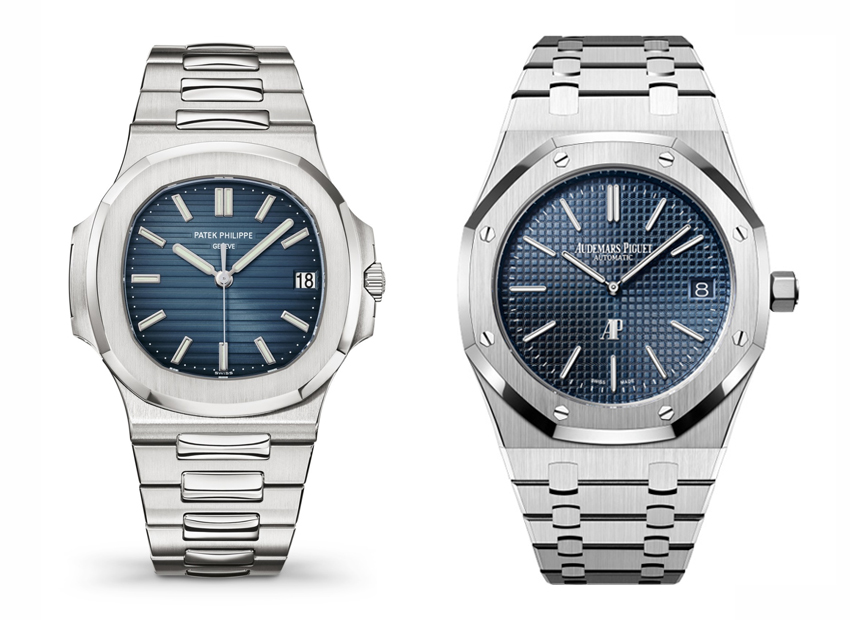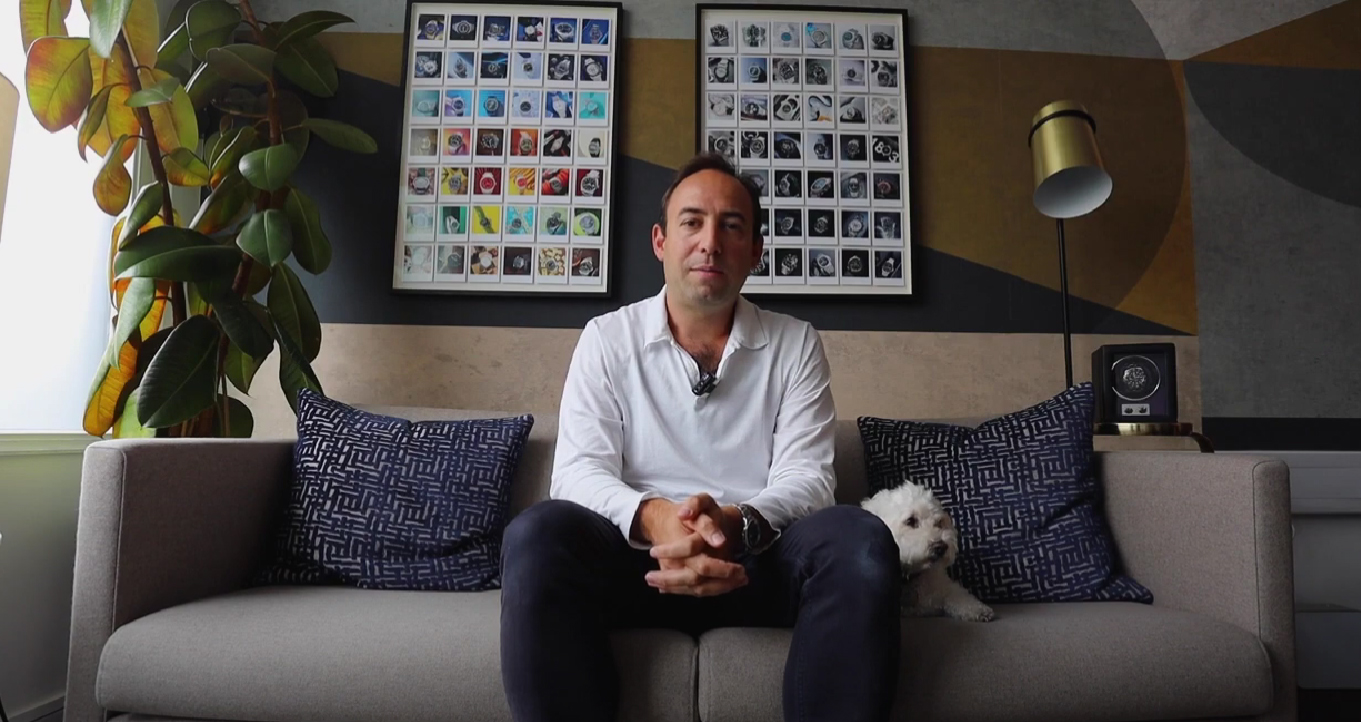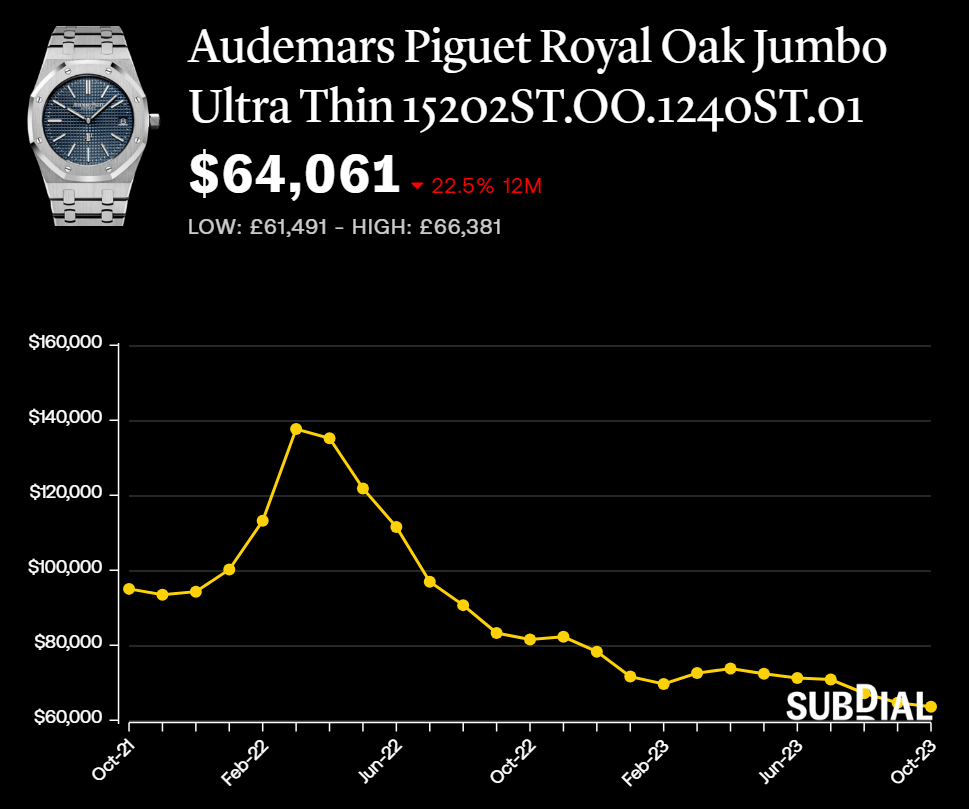By Eddie Bloom
When considering stable, investment watch brands most of us instantly have in mind the big three: Rolex, Patek Philippe and Audemars Piguet.
These three titans of watchmaking have historically made up more than 75% of stock traded by grey market dealers.
And with good reason too: they are far and away the most saleable brands, with the longest waiting lists worldwide. The buyer pool is deep and getting deeper.
Let’s rewind to January 2022, undoubtedly the peak of the pre-owned watch market.
We at Bloombar had just paid one very happy customer a cool £95,000 for his 2019 AP Royal Oak 15202ST “Jumbo” Extra Thin. We felt certain that it was worth at least £110,000 almost immediately.
This had been the norm for the ensuing eighteen months. Prices of newly flipped and pre-owned Patek Philippe Nautiluses and Aquanauts were rising in value by around 5% every month, causing a knock-on effect to its cheaper and more accessible cousin, the AP Royal Oak. There seemed no end in sight.
Many of us surfed this wave of rapidly rising values in the luxury goods market. But they were bought with low-interest loans, fuelled by sky-rocketing crypto values and post-Covid, government-backed loans that no one really expected to repay.
Covid lockdowns, shuttered watch factories and supply issues played a role, of course, but I think there was more to it than that.
I’m not going to pretend I’m a sage of market insight or that I can predict how geo-political events affect the volatility of the luxury goods market. But for us at Bloombar Watches, there was a clear and defining moment the bubble burst: 24th of February 2022, the day that Russia invaded Ukraine.
Since that historical day, one thing after another has contributed to the uncertainty and panic that in turn has seen grey market value of Audemars Piguet watches plummet – in some cases by more than – 50% since early 2022.
AP wasn’t the only brand to have suffered catastrophic declines in demand and values during that period.
If grey market demand for APs really is the ultimate driver, wouldn’t it be brilliant if the powers that be at Audemars Piguet helped by helping us market their watches better?
Prices of sports Patek models and the most traded Rolexes also saw rapid declines.
It seems, however, that despite falling values, demand for these other brands remained incredibly strong compared to Audemars Piguet.
It’s almost if Patek Philippe sneezed and AP caught not just a cold, but long Covid.
Some say that values of Royal Oaks increased in value far too quickly and it was never sustainable.
They may have been designed by Gérald Genta, the same man who designed the Nautilus and Aquanaut, but is that really enough to place them on par with the holy grail of watches?
Although AP produces just 50,000 watches a year, 12,000 fewer than Patek Philippe, they are essentially a one-model brand.
When values fall, therefore, there’s a far greater risk of Royal Oaks flooding onto the grey market than there is a deluge of Nautiluses and Aquanauts. There’s just a lot less of them out there.

Nearly two years on from the start of the war I can count on two hands the number of enquiries we’ve had for a Royal Oak.
In a way I find this surprising since waiting lists are still allegedly very long for the most popular models.
But are they really?
This leads me to wonder: have investors and speculators been too badly burnt to return to the brand, or is this in fact the perfect time to acquire watches from one of the world’s most desirable watch brands?
It’s no secret that a large percentage of watches sold by grey market dealers are purchased from flippers – people who have schmoozed authorised dealers and hoop-jumped their way into getting their name on “the list” for some of the hardest to get watches. (Paradoxically, the premium that certain watches demand on the grey market is precisely what drives huge demand and long waiting lists.)
We understand, however, that a number of our clients are now turning down watches when their name finally reaches the top of the list, as the premiums just aren’t there anymore.
With this in mind, could Audemars Piguet themselves hold the key to increasing grey market demand?
Hear me out.
If long waiting lists are the key to increased demand, and increased demand is the key to healthy grey market values, and vice versa, then surely it’s worth AP intentionally restricting their production for a period of time – taking one for the team – and allowing demand to rebuild whilst suffering a year or two of lower sales.
The long-term gain would, I feel certain, outweigh the short-term pain.
If grey market demand for APs really is the ultimate driver, wouldn’t it be brilliant if the powers that be at Audemars Piguet helped by helping us market their watches better?
At the time of writing, we have just ten APs for sale on our website, a small number compared to the 127 currently for sale on Watchfinder.co.uk.
We would both love nothing more than to sell them all, as quickly as possible, for as much as possible, but we can only put so much of our marketing budget into promoting watches that are somewhat lacking in demand.
This could all change with some input from the brand themselves and a change in mentality.
Someone very senior at IWC once said to me: “We don’t care if someone buys a new IWC or a pre-owned IWC, so long as they’re wearing an IWC.”
IWC’s mentality may not be for everyone, but I believe that in these uncertain times, taking a leaf out of their marketing book might just be the key to the much-needed revival in demand for Audemars Piguets.



As a fan of AP I have ZERO demand for a grey market watch. I’m delighted that flippers and grey market dealers are taking pain and losses.
So Eddie, you want the world to bail you out of your bad “investments”? A whole company that employs thousands should shutdown for a while so you can catch up with reality? You made the excrement sandwich Eddie, time to eat up. Bon appétit.
I am disappointed in watchpro for allowing that disingenuous chart to be included. How about a chart that starts before Covid. That’s the one that gives a clear picture of where these “stable investments” are going. Spoiler alert, they are going down, down, down.
I’m really happy that flippers and resellers are taking a hit. Greed is the cause. I hate to read when people look at watches as an investment or a vehicle to make quick money. It spoils it for the true collectors when desired pieces are sold backdoor to flipper buddies which land in shops of grey market traders.
@RTG – We genuinely have zero bad AP investments as we sell AP on consignment. The point of the article was to shed light on potential solutions to boosting general demand for AP worldwide, not specifically to buy them from us or to “bail” us out. Grateful for the comments though!
It does seem as though there are many grey market haters out there who blame grey market dealers for price volatility, but the reality is it’s pure supply and demand and a plethora of external factors that played a role in the highs and lows.
PS. We didn’t supply the chart. It quite clearly was created by SUBDIAL as stated.